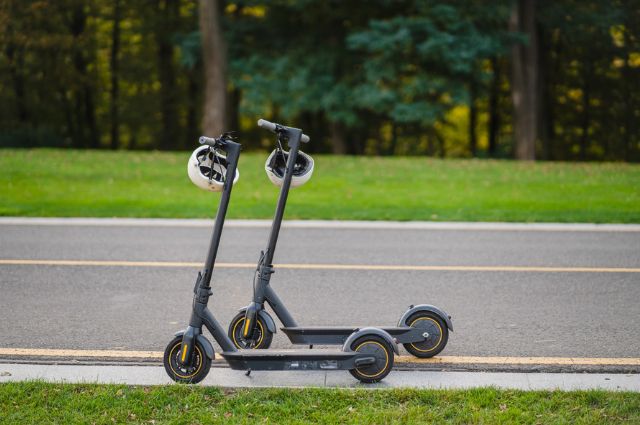
Electric scooters popularity has increased as a convenient, eco-friendly mode of transportation. They offer a practical alternative for short commutes, urban exploration, and recreational rides. A common question that arises for potential buyers and enthusiasts alike is, “How fast do electric scooters go?”
Factors Influencing the Speed of Electric Scooters
- Motor Power
The motor power of an electric scooter plays a significant role in determining its speed. Motors are typically measured in watts, with higher wattage motors generally offering higher speeds. Entry-level scooters might have motors around 250 watts, while high-performance models can exceed 1000 watts. The more powerful the motor, the quicker the scooter can accelerate and maintain high speeds, especially on challenging terrains.
- Battery Capacity
The battery capacity, usually measured in ampere-hours (Ah), affects both the speed and range of the scooter. A higher capacity battery can provide more power to the motor, allowing for higher speeds and longer rides. Lithium-ion batteries are common in electric scooters due to their efficiency and long lifespan. The voltage of the battery also matters; higher voltage systems (such as 36V, 48V, or even 52V) can deliver more power to the motor, enabling faster speeds.
- Weight of the Rider
The weight of the rider impacts the scooter’s speed and performance. Heavier riders may experience slightly lower speeds compared to lighter riders, as the motor has to work harder to propel the additional weight. Manufacturers often provide maximum weight limits for their scooters, and adhering to these guidelines ensures optimal performance and safety.
- Terrain and Incline
The type of terrain and the presence of inclines can affect the speed of an electric scooter. Scooters will generally travel faster on flat, smooth surfaces compared to rough or uphill terrains. High-performance scooters often feature robust suspension systems and larger wheels to handle various terrains efficiently. Inclines pose a challenge, and scooters with powerful motors and higher torque are better suited for hilly areas.
- Weather Conditions
Wind resistance and weather conditions can also influence speed. For instance, riding against a strong headwind can slow down the scooter, while favorable conditions might allow for higher speeds. Additionally, wet or icy conditions can affect traction and safety, necessitating slower speeds to maintain control.
- Tire Type and Pressure
The type and condition of the scooter’s tires can influence its speed. Pneumatic (air-filled) tires typically offer better shock absorption and traction, leading to a smoother ride at higher speeds.
Speed Ranges of Electric Scooters
Electric scooters come in various models designed to cater to different speed preferences and requirements. Here are some typical speed ranges you might encounter:
- Entry-Level Scooters
Entry-level electric scooters usually have top speeds between 10 to 15 mph (16 to 24 km/h). These scooters are ideal for beginners, children, or those who prioritize safety over speed. They are perfect for short commutes and casual rides around the neighborhood.
- Commuter Scooters
Commuter scooters are designed for daily travel and typically have top speeds between 15 to 20 mph (24 to 32 km/h). These models strike a balance between performance and practicality, making them suitable for urban commuting. They often come with additional features such as foldability, lightweight frames, and enhanced battery life for longer rides.
- High-Performance Scooters
High-performance electric scooters can reach speeds of 25 to 40 mph (40 to 64 km/h) or more. These scooters are equipped with powerful motors and larger batteries, catering to enthusiasts and those who require higher speeds for longer distances. High-performance models often include advanced features such as dual motors, hydraulic brakes, and advanced suspension systems to handle higher speeds safely.
Safety Considerations
While the thrill of riding an electric scooter at high speeds is undeniable, safety should always be a top priority. Here are some safety tips to keep in mind:
- Wear Protective Gear
Always wear a helmet, knee pads, and elbow pads when riding an electric scooter. Protective gear can reduce the risk of injury in case of an accident. Additionally, consider wearing gloves and protective clothing to safeguard against scrapes and bruises.
- Follow Traffic Rules
Obey all traffic signals and signs. Ride in designated bike lanes or on the side of the road, and avoid riding on sidewalks where prohibited. Adhering to local traffic regulations ensures not only your safety but also the safety of pedestrians and other road users.
- Be Aware of Your Surroundings
Stay alert and be mindful of pedestrians, other riders, and vehicles. Use hand signals to indicate your intentions and avoid sudden movements. Keeping a safe distance from obstacles and other road users helps prevent accidents.
- Regular Maintenance
Keep your scooter in good working condition by performing regular maintenance checks, such as Ensure the brakes, tires, and battery are in optimal condition before each ride. Regularly check for loose bolts, worn tires, and other potential issues that could affect the scooter’s performance and safety.
- Speed Control
Adjust your speed according to the riding conditions. In crowded areas or rough terrains, it’s wise to reduce speed to maintain better control. High speeds should be reserved for open, safe environments where you can ride without obstructions.
- Lighting and Visibility
Ensure your scooter is equipped with adequate lighting, including front and rear lights, especially if you plan to ride at night or in low-light conditions. Wear reflective cloth as it may enhance your visibility to others on the road.
Choosing the Right Electric Scooter
When selecting an electric scooter, consider your specific needs and preferences. Here are some factors to keep in mind:
- Purpose of Use
Determine whether you need the scooter for daily commuting, recreational use, or off-road adventures. This will help you choose a model with the appropriate speed, range, and features.
- Budget
Electric scooters come in a wide range of prices. Set a budget and look for models that offer the best value within your price range. Keep in mind that higher-end models with advanced features may have a higher upfront cost but offer better performance and durability.
- Portability
If you need to carry your scooter on public transport or store it in tight spaces, consider a foldable and lightweight model. Portability can be a crucial factor for urban commuters who need to navigate through various modes of transport.
- Battery Life and Charging Time
Check the scooter’s battery life and charging time. A longer battery life means fewer recharges, and a shorter charging time ensures your scooter is ready to go when you need it.
- Warranty and Support
Look for scooters that come with a warranty and reliable customer support. This can provide peace of mind and assistance in case of any issues with the scooter.
Conclusion
Electric scooters offer a range of speeds to suit different riders’ needs, from leisurely rides to high-speed commutes. By understanding the factors that influence speed and adhering to safety practices, you can enjoy the benefits of this convenient mode of transportation. Whether you’re a beginner or an experienced rider, there’s an electric scooter out there that fits your speed and performance preferences. So, strap on your helmet, hop on your scooter, and enjoy the ride!
Also read: Which Battery is Used in Electric Vehicle






